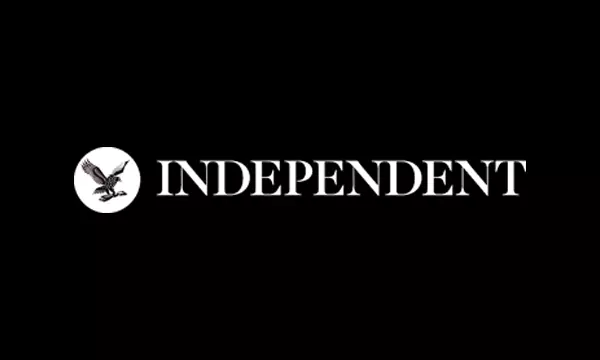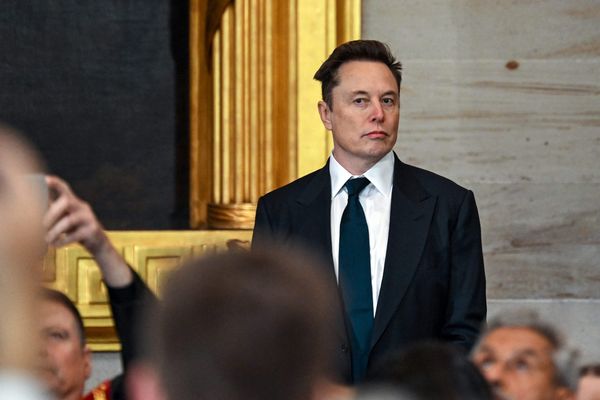
Hours before Elon Musk closed his deal to buy Twitter, he published an open letter to advertisers. Musk knew that big companies in particular were anxious about his plans to dramatically reduce the amount of content moderation on the site. They saw this as a potential threat to what advertisers call “brand safety,” because it would make it more likely that their ads would end up next to deceptive or offensive content. In his letter, Musk acknowledged those concerns, saying that he wanted Twitter to become “the most respected advertising platform in the world,” and that he understood that the site could not become “a free-for-all hellscape.”
Then, over the next two weeks, he almost single-handedly made advertisers’ greatest worries come true.
Musk tweeted out a link to a right-wing conspiracy theory about Paul Pelosi, the husband of the House speaker, and posted a photograph of a Wehrmacht soldier with a joke about how messaging technology has improved. He told independent voters they should vote Republican. And he complained that advertisers were boycotting the site because of activist groups’ agitation, and said that if they did not reverse course, he would subject them to a “thermonuclear name and shame.”
While all that was happening, Musk also hurriedly rolled out his revision of Twitter’s blue-check system. Previously, a blue check meant that you were in some way a notable figure whose identity had been verified. The new system allowed anyone, including totally new accounts, to get a blue check by paying $8 a month and subscribing to what’s called Twitter Blue. This predictably led to free-form chaos on the site. Someone created a George W. Bush account and joked about being nostalgic for killing Iraqis; an account pretending to be the drugmaker Eli Lilly said insulin would be free; and a fake Pepsi account said simply that Coke was better.
Many of these tweets, it has to be said, were clever bits of satire or agitprop—when Eli Lilly had to make clear that the insulin tweet was false, it effectively had to say that it was still charging for insulin. But this, on top of Musk’s own tweets, represented precisely the kind of turmoil and messiness that corporate brand managers hate. If this was Musk’s idea of protecting brand safety, advertisers had to wonder, what would brand danger look like? By the end of last week, two of the world’s biggest ad agencies, IPG and Omnicom, had recommended that their clients pause ad spending on the site, something that big companies such as Audi, General Mills, and General Motors had already done. If you go on Twitter today, most of the ads are for gizmos and weird tchotchkes, such as “magical” ice scrapers or “dragons’ eggs.”
Musk knows, obviously, that all this turmoil is bad for business. Advertising accounted for about 90 percent of Twitter’s revenue before he took it over, and although his plan is to eventually replace a lot of that with subscription revenue, in the short run he needs the ad dollars. So why has he behaved in such a seemingly reckless manner?
The answer, I think, is simple: Musk doesn’t understand advertising, or advertisers’ concerns, and so doesn’t take them seriously.
Beyond not understanding advertising, Musk actively disdains it—particularly the kind of brand advertising that corporations do on Twitter. Tesla, after all, spends no money on advertising. (In its annual reports, the company describes its marketing and advertising costs as “immaterial.”) Initially, that may have been because Tesla didn’t need to run ads: It had a long waiting list for its cars, so spurring demand made little sense. But even as competition in the electric-vehicle market has increased, Musk has remained adamantly opposed to spending on ads. In 2020, a large Tesla shareholder got a proposal for the company to begin advertising onto the proxy ballot but, taking their cue from Musk, a majority of shareholders easily voted the proposal down.
For Musk, brand advertising is inherently shallow and deceptive, and irrelevant to corporate success. In 2019, he tweeted, “Tesla does not advertise or pay for endorsements. Instead, we just use that money to make the products great.” The main reason it might make sense for Tesla to advertise, he’s suggested, would be to buy good coverage, because the media doesn’t write bad things about big advertisers. Even in his open letter to advertisers, Musk was implicitly scornful of brand advertising as opposed to advertising that “can show you a service or product or medical treatment that you never knew existed.” Those are generally not the kind of ads that General Mills runs.
Now, it may be that Musk is actually right about the vapidity and pointlessness of brand advertising. But from the perspective of Twitter’s business, that doesn’t matter. What does matter is that he can mouth the words brand safety, but he has no meaningful understanding of what that phrase means, or why advertisers might be genuinely concerned. Musk even seems skeptical of the very idea of safety.
“Be more adventurous,” he told advertisers in a conference call last week. “That’s what I’ve done with Tesla and SpaceX and it’s worked out quite well.” But being more adventurous on Twitter is precisely what big, mainstream brands don’t want to do. Foremost in their mind is the downside of one of their ads potentially ending up next to a tweet from a QAnon supporter or a neo-Nazi.
Presumably, if corporate advertisers continue to stay away from Twitter, Musk will have to rethink his approach. But the fact that he’s already created such turmoil raises a bigger question: Namely, is there any reason to believe that he can do a good job of running the company?
His many millions of fans would say, Of course there is. He built a revolutionary car company and sent reusable rockets into space, so yes, he can run a little social-media company. But the assumption that because he’s done the former, he’ll find it easy to do the latter rests on the common misconception that all management skills are transferable: If you’re good at being a boss, running one kind of company is much the same as running any other kind of company.
The problem for Musk, and for Twitter, is that a lot of evidence suggests otherwise. Although certain types of management skills are portable, many others are not. This isn’t just, or even primarily, about experience. Rather, the majority of executives are simply better at dealing with certain kinds of problems, and running certain kinds of businesses, than others. When they encounter situations that do not match their skill sets, they typically struggle.
A 2006 Harvard Business Review paper by Boris Groysberg, Andrew N. McLean, and Nitin Nohria studied a group of GE executives who had gone on to run other companies. GE at the time was a big, diverse company, which meant that different executives worked in very different industries. It was also a premier training ground for corporate CEOs—other big companies would regularly raid GE’s management ranks. Yet, the paper’s authors found, these alumni were not universally successful.
Although executives who went to companies that required a similar set of “strategic skills” as the divisions they had run at GE thrived, those who went to companies that required a different set floundered. Similarly, executives who took over companies in industries very different from the one in which they’d previously worked fared very poorly; their companies saw negative shareholder returns of, on average, 29 percent.
That study, to be fair, had a small sample size. But an analysis by the scholars Dovev Lavie, Thomas Kiel, and Stevo Pavićević of nearly 1,300 CEO appointments from 2001 to 2014 reached a similar conclusion: The biggest factor in determining whether a new CEO coming from outside would fail was “a misfit between the CEO’s corporate background and the company’s organizational characteristics.” Precisely such a misfit might involve a CEO going from running companies whose success depends on technology and engineering to running a company whose success depends on creating a welcoming environment for social interaction and satisfying the particular concerns of corporate advertisers.
This doesn’t mean that Twitter is necessarily headed for bankruptcy. The company still has 240 million active users, and in the U.S. at least, those users are better-educated and higher-income—attributes that advertisers like—than users of other social-media sites. But Musk’s seeming indifference to alienating those users and the advertisers who want to reach them is, in the long run, a losing strategy. For that matter, his approach to Twitter’s human capital—firing half the workforce and telling the rest to get “hardcore” or quit—doesn’t exactly suggest someone keenly attuned to social dynamics. Rather than try to learn an entire new set of management skills, he should take the easier, more sensible path: Hire someone who has real experience in social media and strong relationships with advertisers to run Twitter.
Musk, we’re always told, is a genius. Maybe so, but sometimes you have to be smart enough to realize you’re out of your depth.







